Free digital copy
Get Speciality Food magazine delivered to your inbox FREE
Get your free copy
Buttery, supple and open-textured, speckled with holes… or flaky, savoury, and almost spicy – to discover Alpine cheeses, is to open the door to an entire world of flavours. Flavours that simply cannot be replicated elsewhere.
As British consumers continue to expand their knowledge of artisan cheese, seeking out better quality varieties from specialists, so the demand for ‘newness’ grows, and cheesemongers (and wholesalers), say they’re seeing these Alpine styles, particularly, getting lots of attention at the counter. These are cheeses that pack a punch (both visually and taste-wise), are often lactose free, and that lean into shoppers’ environmental concerns, with the majority made in a sustainable, natural way, according to time-honoured traditions.
“I believe the appeal of Alpine cheeses lies in their cheesemakers’ unwavering commitment to quality. Especially the quality of their primary ingredient – milk,” says Svetlana Kukharchuk, founder of The Cheese Lady. “This dedication inevitably translates into phenomenally delicious and complex cheeses. Alpine cheeses are also timeless, always appropriate, and versatile,” she adds. “They can shine as part of a cheeseboard, elevate the flavour of a dish when used in cooking, and become the star of the show when melted into a fondue.”
Stretching across France, Switzerland and Italy, and dipping into Lichenstein, Monaco, Germany, Slovenia and Austria, Europe’s Alps have a pasture season (from May to October) documented as far back as Medieval times. So sacredly held is this production window, that in December 2023, UNESCO recognised the season as part of its Intangible Cultural Heritage list.
During these months, Alpine herdsmen and women drive cattle, sheep and goats up to historic mountainsides and plateaus between 600m and 2,900m altitude, where the animals are free to roam, grazing on fresh grass, herbs and flowers.
This ‘transhumance’ (or moving of animals to summer pastures also known as alpages) happens in mountain ranges across the world, says Rachael Sills, founder of Kaseswiss. Milking is carried out, and that milk transformed into Alpine cheese in the same place. “The European Alps,” Rachael adds, “have an environment, culture and history which is unique and special. We could think of the Alps and cheese production in terms of terrior.”
“Altitudes, and thus the grazing pastures are higher in the Alps than other mountain areas. Plant diversity is at its most abundant.
“Until modern times, in Switzerland cheese was only made on the Alps in summer months so that farmers could take advantage of the additional feed available. Cheese was made as a way of preserving the milk for eating in winter months, thus the style of cheese made in the Alps grew out of necessity.
“Alpine cheese is made directly in the Alps with no transportation of milk to the valleys for processing. All work is done by hand, and families live alongside the animals during this period. Conditions for living are simple, often with no electricity or usual comforts.”
All of these factors, Rachael says, have a profound impact on the finished cheeses.
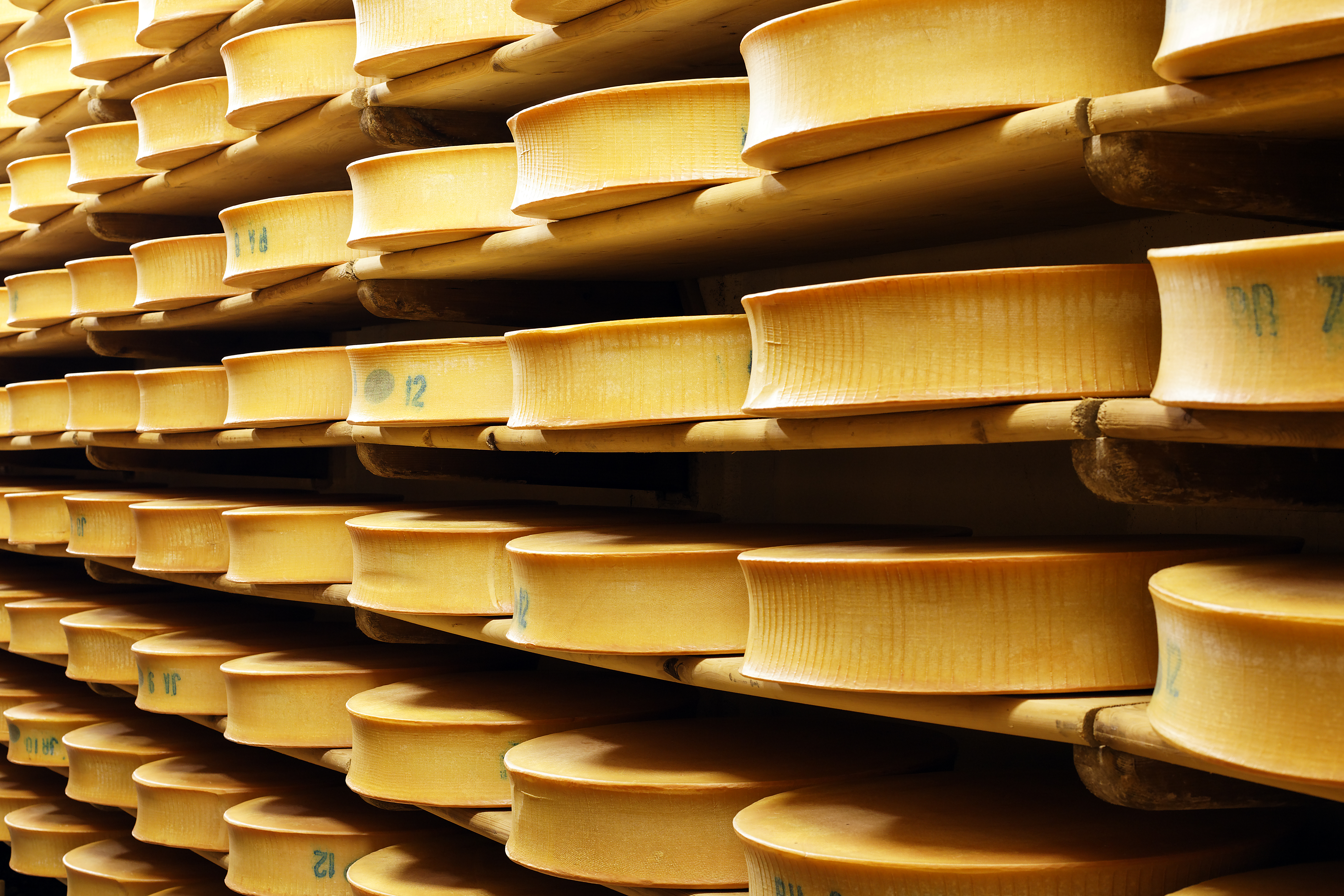
“It’s a time-consuming craft performed by families who often trace back generations of summers working on the same Alp area,” says Rachael. “Alpine varieties are some of the ultimate expressions of the Slow Food movement, and the Alpine environment creates a diversity of plants, and then the milk, that cannot be replicated elsewhere.”
Grazing within this environment produces milk, Rachael says, of exceptional quality. “Housed in traditional chalets on the Alps, farmers make raw milk cheese using copper vats over open wood fires, following methods from centuries gone by.” Living conditions are tough, days are long, and the work is all carried out by hand, “but every farmer we meet loves to be there nonetheless.”
“We sell Swiss cheeses specifically from the Emmental Valley,” says Marcello Bacini of Jumi Cheese. “For us, there is a lot of history there, and that is what makes it special. If you go back to the Swiss Cheese Union, which was around until the mid-90s, cheesemakers would only make a certain cheese based on the geographical location where they were situated. So, in the Emmental Valley, they could only make Emmental, until it was dissolved. It was only in the 90s cheesemakers could come up with new ideas and experiment and go wild. Until then, it was pretty much just Emmental or things close to Emmental that could be made there,” he explains.
This particular part of Switzerland, Marcello continues, is incredibly traditional, while being innovative. “It is a microcosm of small farms everywhere. Really tiny farms, with an average of 20 to 25 cows each, all family-run. They bring the milk once or twice daily to the dairies with tractors. Sometimes as little as a few cans of milk.” This makes the practice very sustainable, Marcello says, adding the farms are well funded and lucky to make a good price for their milk, which is of the best quality. “Quality of milk is something that seems to have been forgotten in some other parts of Europe,” he says. “But it really matters. All the cows that produce the milk for our cheeses graze on fresh grass or hay and are sileage free.”
Rachael puts increased interest in Alpine cheese down to awareness. “More people know it exists,” she adds. And they’re won over by the fact these products are not intensively farmed. “In Switzerland, for example, no herbicides or fungicides are allowed to be used on Alpine pastures.” Cheese lovers are looking, she adds, for high-quality products, made with integrity, and with strong stories and origins.
And they’re also attracted by the fact, Rachael says, that Alpine milk is from grass-fed herds, actively encouraged to root, graze and forage. “Researchers have shown seasonally produced Alpine cheeses are not only high in Omega-3 fats like ALA, but have a relatively low concentration of arachidonic acid, which can exacerbate inflammation in the body.”
Marcello thinks the uptick in Alpine cheese sales is down to changing tastes. “I read in the news somewhere recently that Brits are falling out of love with Cheddar, and looking for more interesting cheeses,” he says. “I think the bottom line is, Cheddar is a fantastic cheese, with a lot of brilliant producers, but the majority of consumers have got used to supermarket Cheddar, which often comes in a brick or grated, and has zero taste.
“When it comes to Alpine cheeses we can talk about flavours of fresh grass and hay. Nutty and floral and spicy notes. Things you don’t find any more in commercial cheeses. It stands out. Also, perhaps it just feels good for customers to find cheeses that are ethically produced and sustainable.”
Marcello, again, agrees with Rachael that Alpine cheeses’ supposed health benefits are chiming with shoppers, who are putting strong value in anything natural and gut-friendly.
“Cheeses like Comte and Gruyere have always been good sellers for us,” says Danielle Bliss at Paxton & Whitfield, “and we are seeing their popularity continue to rise. We also increasingly have customers in search of new cheese, but with a similar profile.”
Alpine cheese’s “sweet, nutty, brothy” taste, Danielle says, is definitely trending in the industry, with greater consumer recognition bolstered by larger brands and makers. “There has been some excellent marketing from the co-operatives behind Gruyere and Comte over the last decade or so,” she adds. “And we are also seeing lots of experimentation from British cheesemakers looking to make homegrown versions of these types of cheese. Makers like King Stone Dairy have had huge success with both soft and hard Alpine styles.”
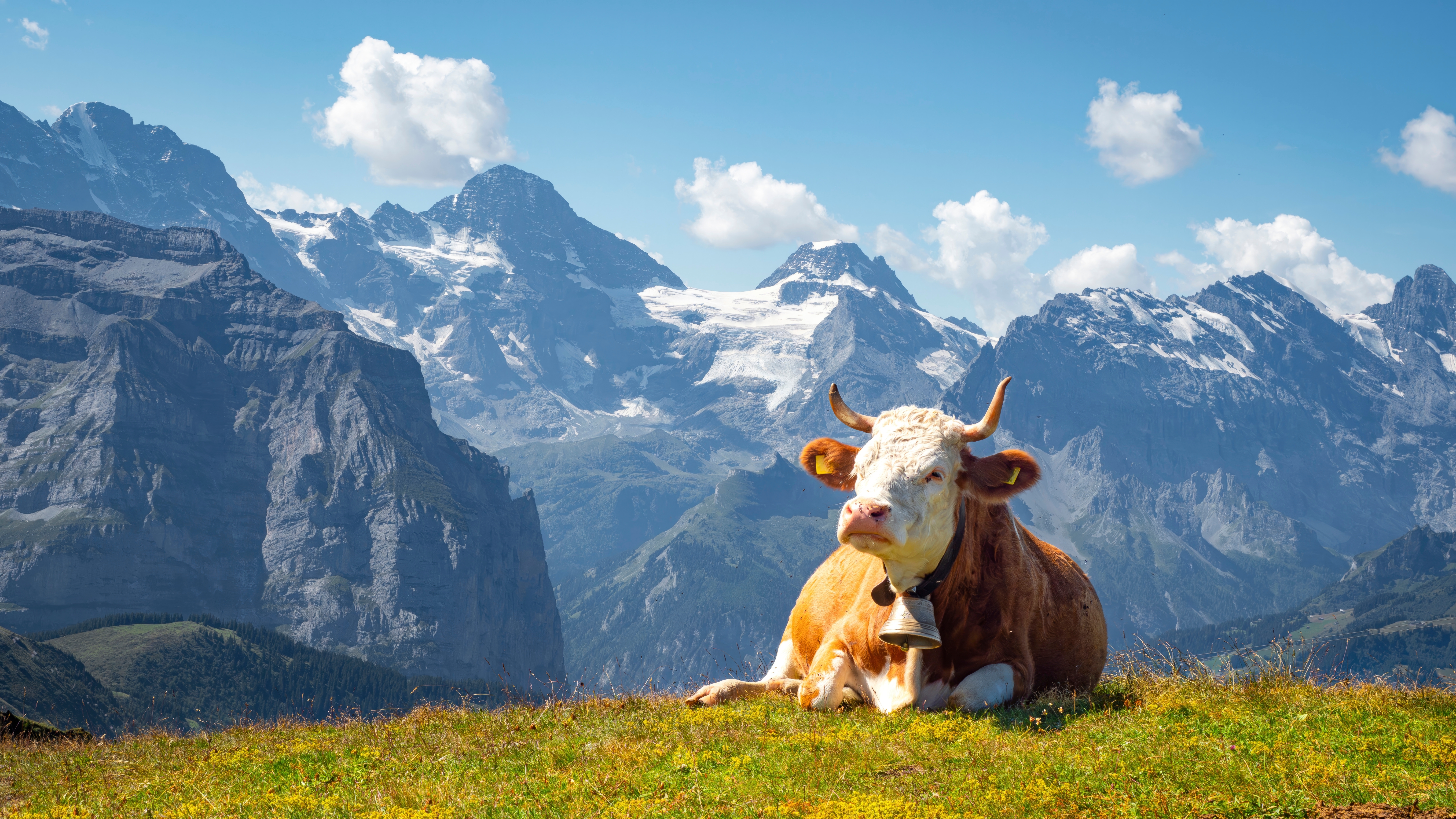
Makers in the UK are turning more and more to Alpine methods, which are quicker than, say Cheddar, requiring less storage and maturing space, with these varieties usually ready to sell within around three months.
Catherine Temple of Mrs Temples Cheeses in Norfolk struggled with the Canadian Holstein cows she and her husband inherited on the farm from her in-laws. They produced excellent milk, but needed to be kept indoors most of the time – and that meant lots of straw bedding and labour to shell out for, alongside the cost of providing large quantities of grain and soya for feed.
“To improve our business model we needed cows which required fewer inputs,” she says. A few of the Brown Swiss breed, not common in the UK, were offered up to the farm, and Catherine liked them so much she imported 60 in-calf heifers from Bavaria and Austria. “I wanted to showcase their talents with an Alpine cheese and had the opportunity to learn when an old friend suggested a cycling holiday in the Jura. We visited a number of village creameries where Comte and Tomme were made, and started production on my return.”
The staff were delighted, she adds. “As it is made at a higher temperature, it takes fewer hours to make than Cheddar, so meant they could get home in time to meet their children from school!”
Catherine puts the popularity of Alpine cheese styles down to Brits’ travelling and exploring natures, and the greater affordability of skiing and snowboarding holidays, where they’ve been discovering raclette, fondue and Alpine cheeseboards. “Many ski resorts celebrate their summer dairy industry by showcasing their products and have cheese-related retail and museum attractions close to the resorts,” she explains. “Then there’s the increasing popularity of hiking and wellness summer holidays in Alpine areas.”
Over at Quicke’s in Devon, renowned for its award-winning Cheddar, the family are seriously considering whether they should bring Alpine cheese into their wheelhouse, having been involved in the creation of an ‘Alpen Cheddar’ earlier this year. “The idea was born in a hot tub in California at an industry friend’s wedding after a day of merriment,” says Jane Quicke. “Our head of sales at the time was there with a German cheese affineur and broker, Norbert, and they came up with it. Norbert was already working with Albert Kraus to produce cheeses such as the popular Alp Blossom, and so that became the base recipe to which the Cheddar was added.”
Jane says they all loved the cheese, as did customers. “We have found the English palate prefers the cheese a little younger than the German palate. The target age in England is three months compared to five months plus in Germany,” Jane adds, saying they have considered making a different type of cheese at the dairy, taking into account what’s best suited to their milk, climate and other provenance factors.
Perhaps one of the oldest types of British Alpine-style cheese is Lincolnshire Poacher, made by brothers Tim and Simon Jones. “The chap who taught Simon to make cheese was Dougal Campbell…and he learnt his cheesemaking in the Alps,” Tim explains. “He came here to make the very first batch of cheese, and Simon carried on thereafter, making it to his recipe, which had Alpine elements.”
Lincolnshire Poacher has broadly been pulled into the Cheddar group of cheeses, but over the years, says Tim, they’ve taken it more and more in the Alpine direction, cooking the milk to higher temperatures, and cutting the curds slightly finer. “They are smoother cheeses that keep longer, typically 18 months to two years, which lets some of those sweet, floral, nutty notes you’d associate with Alpine cheese come through. We prefer those flavours, and the market prefers them too.”
Tim thinks, like Marcello, that our tastes in Britain are evolving, which is why consumers are reaching for products other than their regular Cheddar or Brie. “They want something more interesting, and most of the Cheddar in this country is made commercially to a pretty flat flavour profile,” he says. “People have been exposed to the flavours of Beaufort and Gruyere, and they’re more open to those.” On the subject of UK-made Alpine cheese, Tim thinks we’re getting better at producing it here, taking Lincolnshire Poacher as a case in point. “Our cheesemaker, John, wasn’t born when we started making cheese. I showed him the make from when we first started, and it was unrecognisable from a technical point of view!”
“In a world where ultra processed food is becoming so prevalent, to have the opportunity to buy and eat a truly unique type of cheese made with so much heritage and hard work, from the best quality milk, that’s delicious and healthy – this should be treasured,” says Rachael. “It’s exciting that we can have a connection to cheese from such origins,” she adds. “We should be embracing the culture of genuine Alpine cheese and the people who make it.”
Danielle says she likes to be led by customers, and they are certainly taking her in the direction of Alpine styles. “It’s great to go out and find new and different artisan versions of cheeses that people haven’t tried before, whilst also offering them what they are excited about,” she adds.
Having cheeses, particularly enduringly popular hard cheeses, that form a point of difference, is certainly an attraction for today’s shopper, agrees Marcello. “Italian cheeses, French cheeses, Swiss cheeses – they all have completely different profiles, and a lot of what makes a successful counter at a cheese shop or deli is having something that stands out. In the time we have been around, since starting in Borough Market in 2011, we’ve had lots of interest in what we sell, with people so curious to try new cheeses. And the in the shops we supply, they are always very well received.”
1. L’Etivaz
More than 3,000 cows graze over 130 Alpine pastures at 1,000 to 2,000 metres above sea level…their floral, herbaceous milk collected daily and heated over wood in copper vats. L’Etivaz is avilable in three expressions, from Doux (under nine months) which has those flowery, light, gentle notes with just a hint of salt, to 14-month AOP Reserve, which ramps up the taste, being saltier and more savoury, with a full body.
2. Vacherin Fribourgeois
The first records of this endangered artisanal Swiss cheese go back around 1,000 years. An essential part of the classic Swiss fondue recipe, today it’s crafted by just a handful of makers. The cheese has a headily-scented washed rind, leading underneath to a creamy-coloured paste, giving milky, nutty and even chocolatey notes.
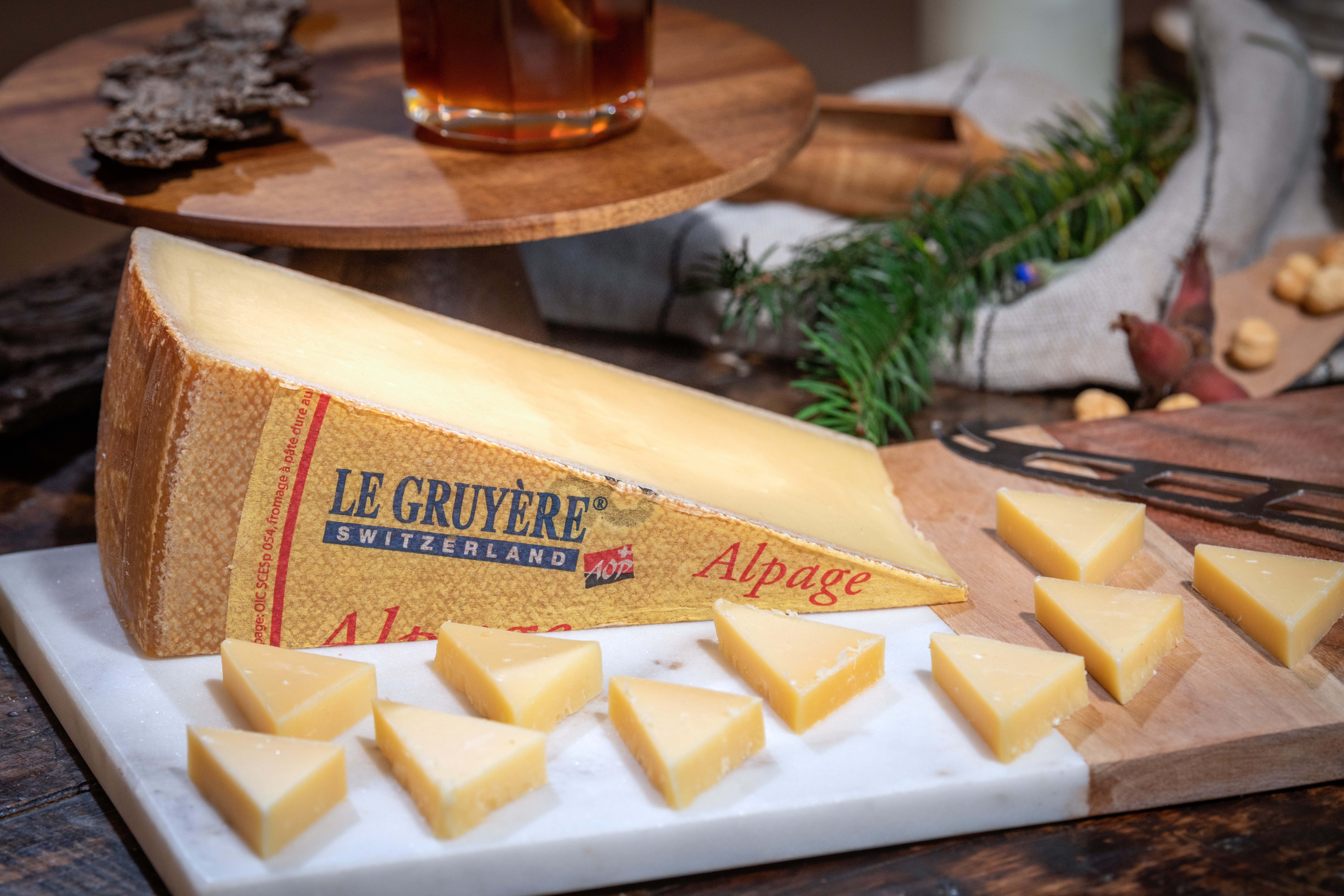
3. Le Gruyere AOP
One of the treasures of the Alps. Production of this fine speciality cheese can be traced back to 1115, with Le Gruyere representing true craft, tradition and expertise. Its production is strictly specified, with each step of making – from the gathering of milk, to forming the cheese, and maturing every wheel, adhering to set, governed rules.
Aged six to nine months, Le Gruyere is smooth, sweet, mild and a touch creamy, with the intensity dialled up after 10 months as it transforms into Le Gruyere AOP Reserve, and its delicious savoury bite becoming outstanding when matured to 18 months or above. No cheese counter should be without it.
4. Berner Hobelkase AOP
The origins of this cheese, and others from Switzerland’s Bernese Oberland region, date to around 1500, gaining importance during the 17th Century. Production methods have hardly changed since the late 1800s, with the cheese relying on the premium milk of cows grazed in this unique climate.
It’s washed at between five to seven months, and kept at a high humidity of 70 to 75% to tease out its strong, caramelly, sweet and nutty notes. Rarely available in huge quantities, this is one of Switzerland’s most sought-after cheeses.
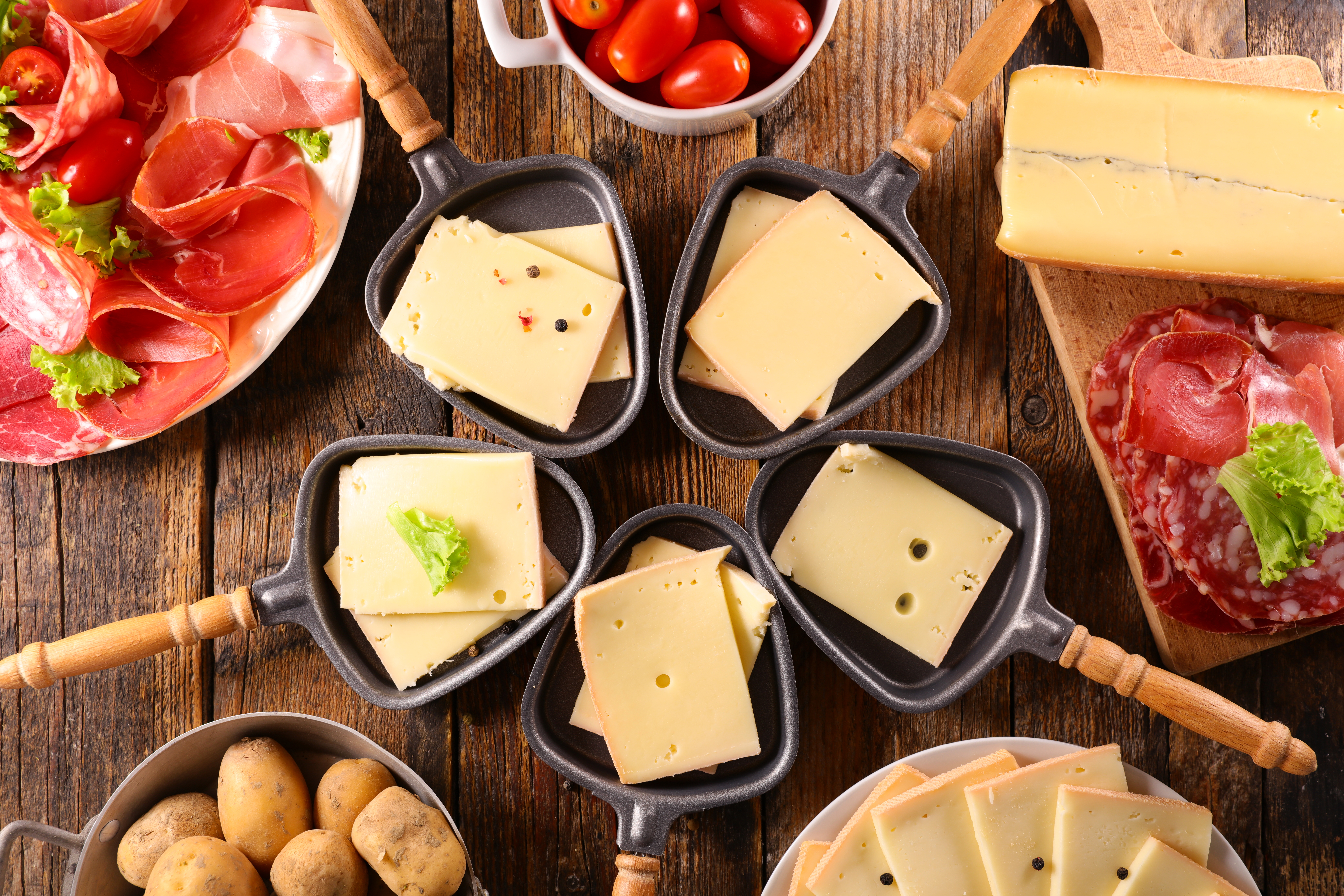
5. Raclette
The star of Raclette is rising in the UK, with restaurants, street food vendors and pop-ups tapping into consumers’ love of experiential dining. After all, what could be more alluring than melting cheese at the table, and dunking in chunks of bread, potato and pickles? Beneath an edible dark orange rind, the cheese has a firm, smooth, ivory paste with a taste that varies from nutty and floral, to fruity and spicy as it ages. Most Raclette is produced in Switzerland, though there are some very good versions made in the French Savoie, which are thought to be sweeter, and more buttery than their pungent Swiss cousin.
6. Tessiner Alpkase AOP
Beneath its mottled rind, this is a smooth, rich, hard cheese, produced in the Ticino canton of Switzerland, bordering Italy. Made at between 1,500 and 2,400 meters above sea level, the taste is complex, with grazing herds having the choice pick of nearly 300 plants. Studies show this cheese is especially high in unsaturated fatty acids such as Omega-3 and Omega-6.
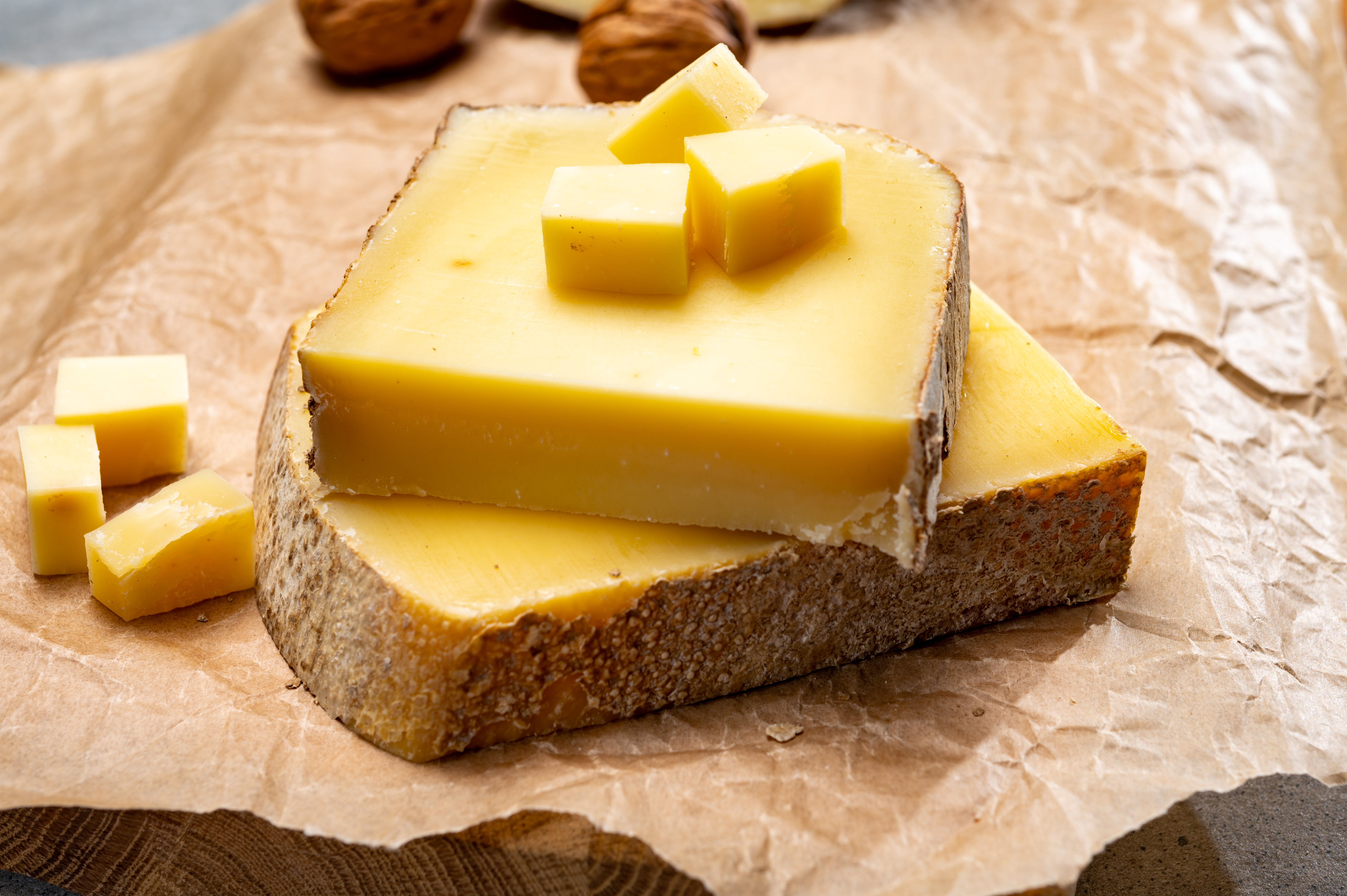
7. Comte AOP
More than 3,000 family farms in France’s Franche-Comte and Rhones-Alpes regions dedicate themselves to producing this prestigious, world-renowned cheese, made exclusively with milk from Montbeliarde and Simmental cows.
Comte’s affineurs age the cheese between four to 18 months (sometimes beyond), hand turning, salting and rubbing every wheel with brine, developing its unique crust. The cheese is smooth, sliceable and beautiful for melting, with a deeply distinctive taste that starts floral and sweet, ageing to a tangy finish.
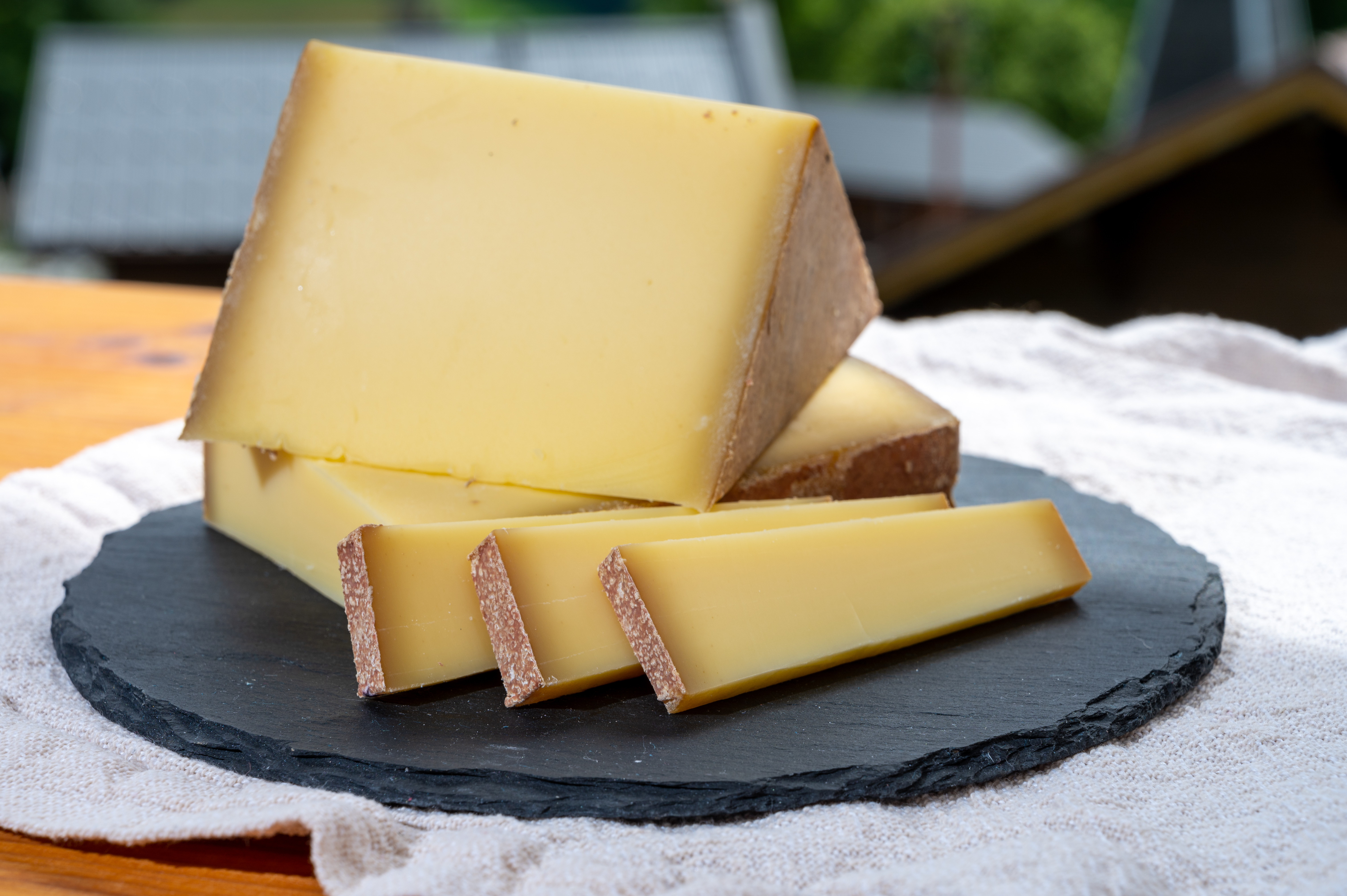
8. Beaufort AOC
France’s Savoie region boasts production of this unmistakable cheese, which has characteristics well beyond the sweetness, and nutty tastes observed typically in Alpine varieties. It’s aged for at least four months, taking on greater depth with each month that passes. There are three varieties of Beaufort. D’ete (made in summer), D’hiver (made in winter), and the hugely prized cheesemonger favourite, Beaufort D’alpage (crafted in summer chalets).
9. Appenzeller ‘Edel Wurzig’
This powerful Swiss cheese looks great on the counter, identifiable by its striking magenta label. Aged to nine months or more, Appenzeller is washed in a top-secret combination of spices and wine, which permeates into the paste, merging with the delicate Alpine milk to bring to the table a cheese that is highly aromatic. Just 75 dairies produce Appenzeller today.

10. Tomme
Made in the Italian Alps, Tomme can only be produced in a window between May and July, when the milk is at its absolute best. It’s matured for a minimum of 12 months and stamped with the year of production. After two years it really is very special, being grassy, spicy, and completely different to Comte or Gruyere.
11. Schlossberger
A classic Swiss cheese, aged between 15 to 18 months. It’s super super nutty in flavour, with brothy, meaty notes, and a sweet finish of pineapple. A bestseller for many wholesalers.
12. Sprinz AOP
Sprinz can trace its roots back to the 16th Century, when it would have been transported over the Swiss border to Italy by mule. This is an all-natural cheese, with very strict rules around its production, including that it can only be made using milk from the Swiss Brown cow, fed purely on grass and hay, with no sileage. Sprinz is aged for a minimum of 18 months, but reaches the height of perfection at 22 months when it becomes deliciously spicy and nutty. It’s available from just 25 selected dairies.
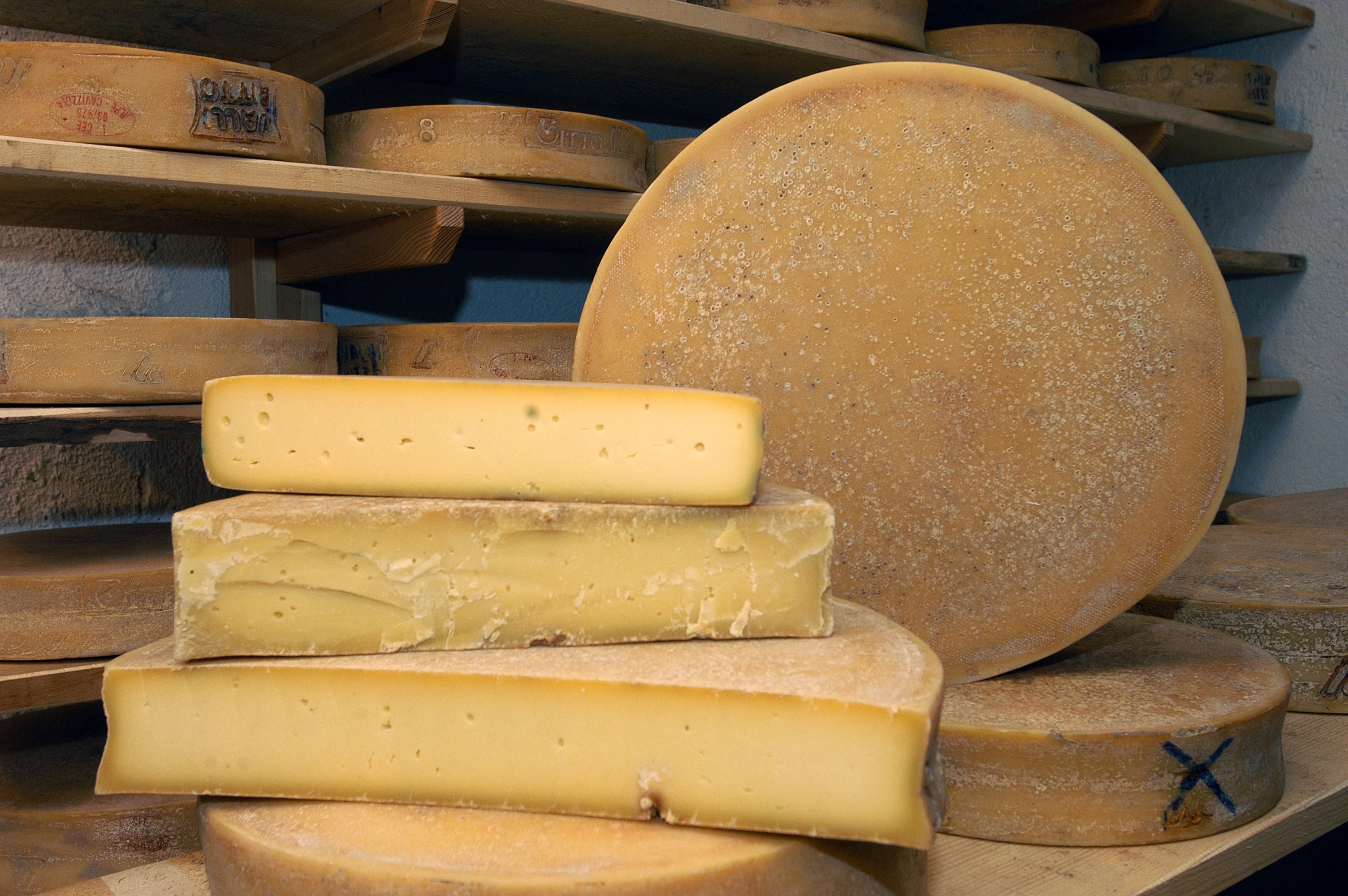
13. Bitto Storico
One of the oldest cheeses in the world, made by hand in Northern Italy’s Bergamo Alps. The farmers who produce it still live simply (during the season from the beginning of June until the end of September) in ancient stone dwellings, collecting milk from cows and native Orobica goats. Bitto is aged for a minimum of 70 days, changing from white to creamy yellow inside, and from mild to sharp in flavour. Some of the best are even aged to five years, but these are rarely available.
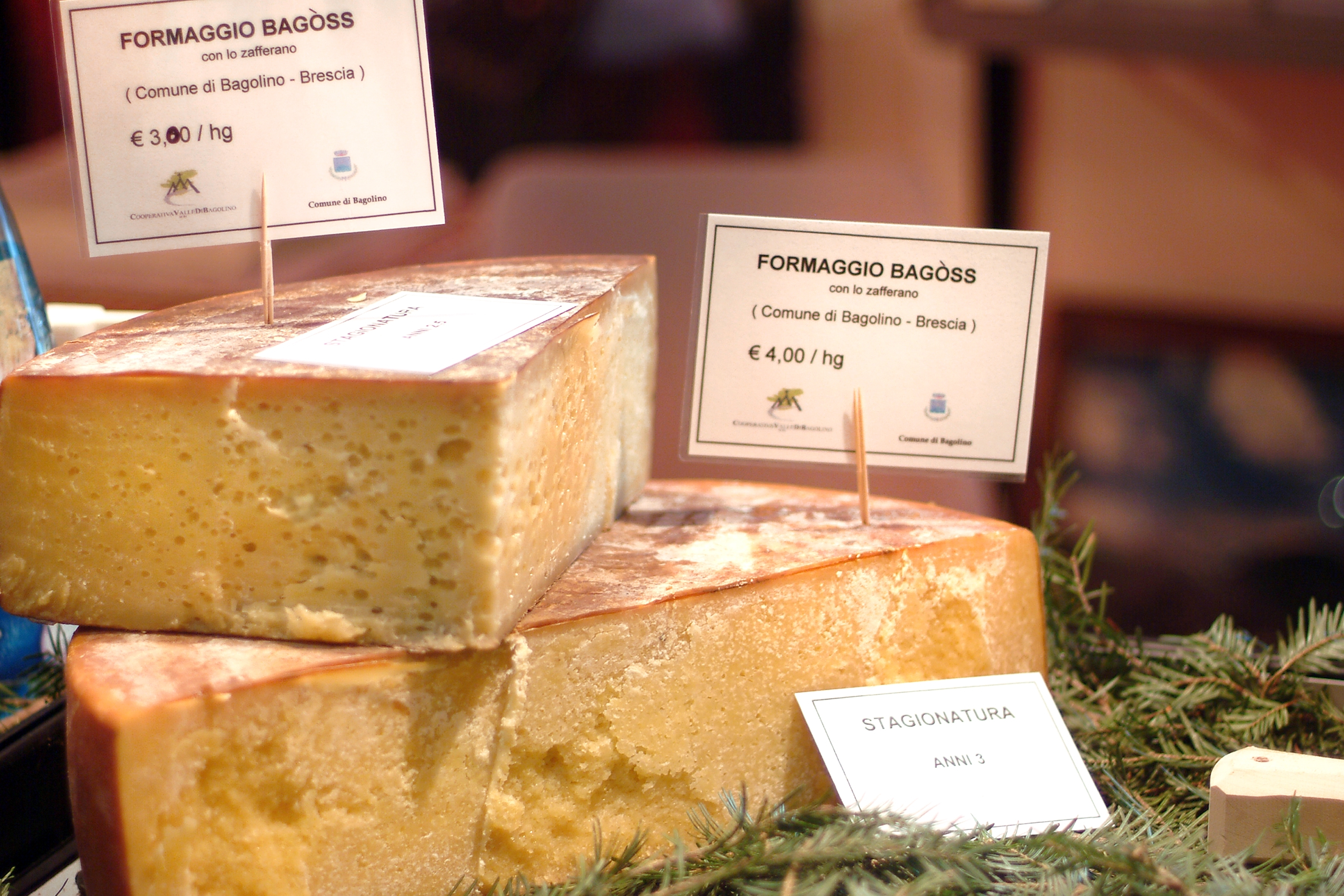
14. Bagoss
Noted for its caramelised colour and supremely flaky texture, Bagoss is made in the small Italian village of Bagolino, using milk only from Bruna Alpina cows, to which saffron is added during the cutting of the curds.
It’s aged for a minimum of 12 months, maturing up to three years, gaining a savoury, spicy and piquant flavour.
15. Valtelina Casera PDO
Hailing from Italy’s Lombardy region, Valtelina is made from partially skimmed cow’s milk and matured for a minimum of 70 days. Its colour ranges from pale white to straw yellow, with the cheese offering a mild, sweet and fruity taste that intensifies with age.
16. Kaltbach Alpine
Notable by its black rind, Kaltbach is fast becoming a cheese counter favourite across the UK. Firm, but very creamy and smooth, the cheese is aged in historic sandstone caves within Switzerland’s Santenberg mountain. The cool, humid cave climate allows each cheese to develop a buttery, incredibly nutty flavour, rounded by sweetness. It melts beautifully, and is a great alternative for fondue.
.jpg)
17. Alp Blossom
Crafted by the award-winning Albert Kraus, Alp Blossom is pretty as a picture, made with the milk of just two herds of Brown Swiss cows in Bavaria’s Allgau region. The cheese is tender and smooth, with a creamy taste enhanced by the myriad herbs and flowers pressed into the rind. It’s fast becoming a modern classic in speciality cheese shops.
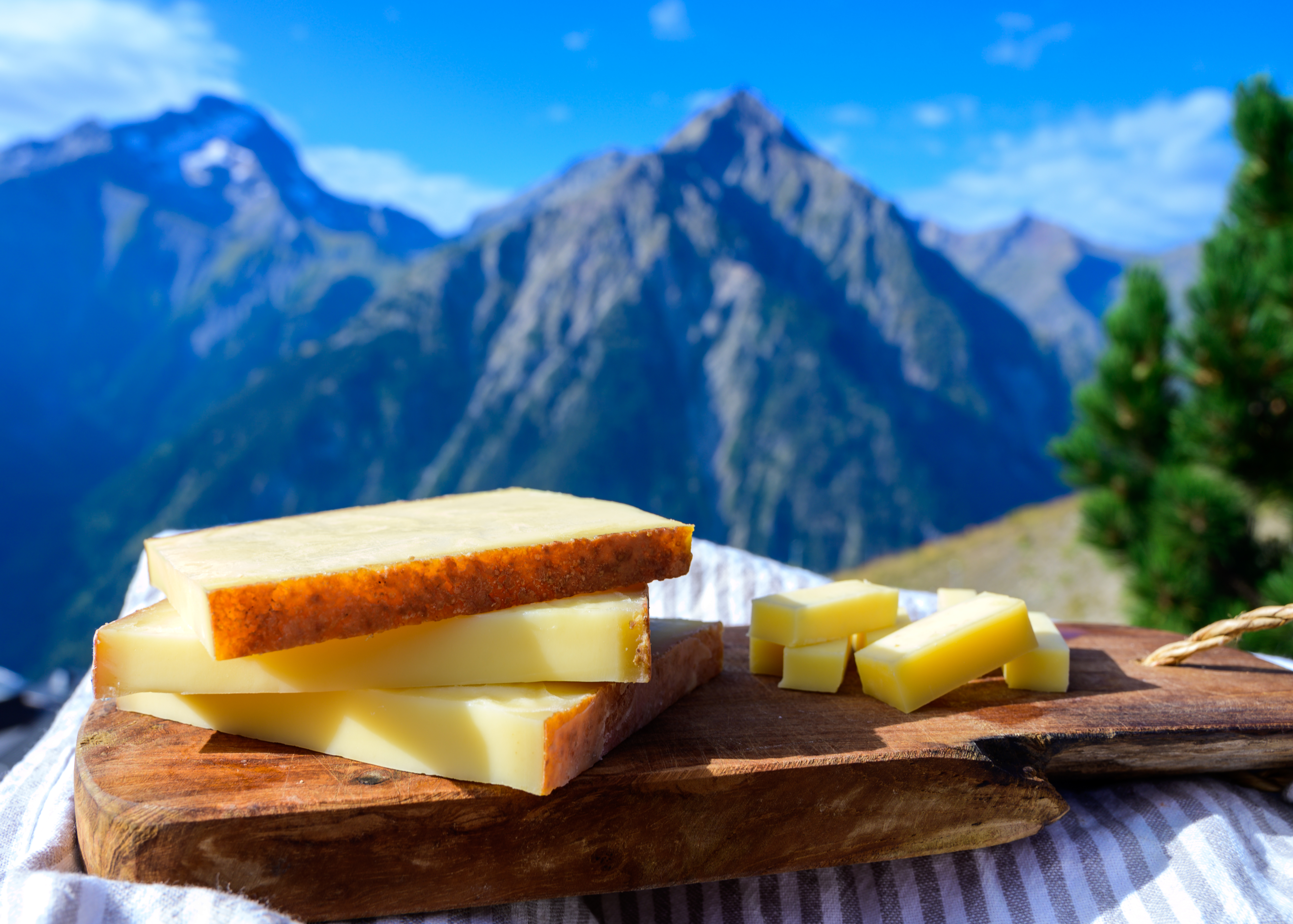
18. Abondance PDO
One of France’s most ancient cheeses, dating back to the 12th Century. Huge wheels are crafted in the Haute Savoie, ageing for at least three months, taking on hazelnut and fruit flavours, and a melt-in-the-mouth texture.
19. Cantal
The volcanic soils of France’s Auvergne provide a completely unique, biodiverse landscape for makers’ cows to graze on, giving Cantal a flavour you really cannot compare with anything else. Available made with raw or pasteurised milk, the semi-hard cheese is typically aged for a month, but really shines as it edges towards six months, changing from mild and grassy, to a sharp, earthy complexity with a little crunch.
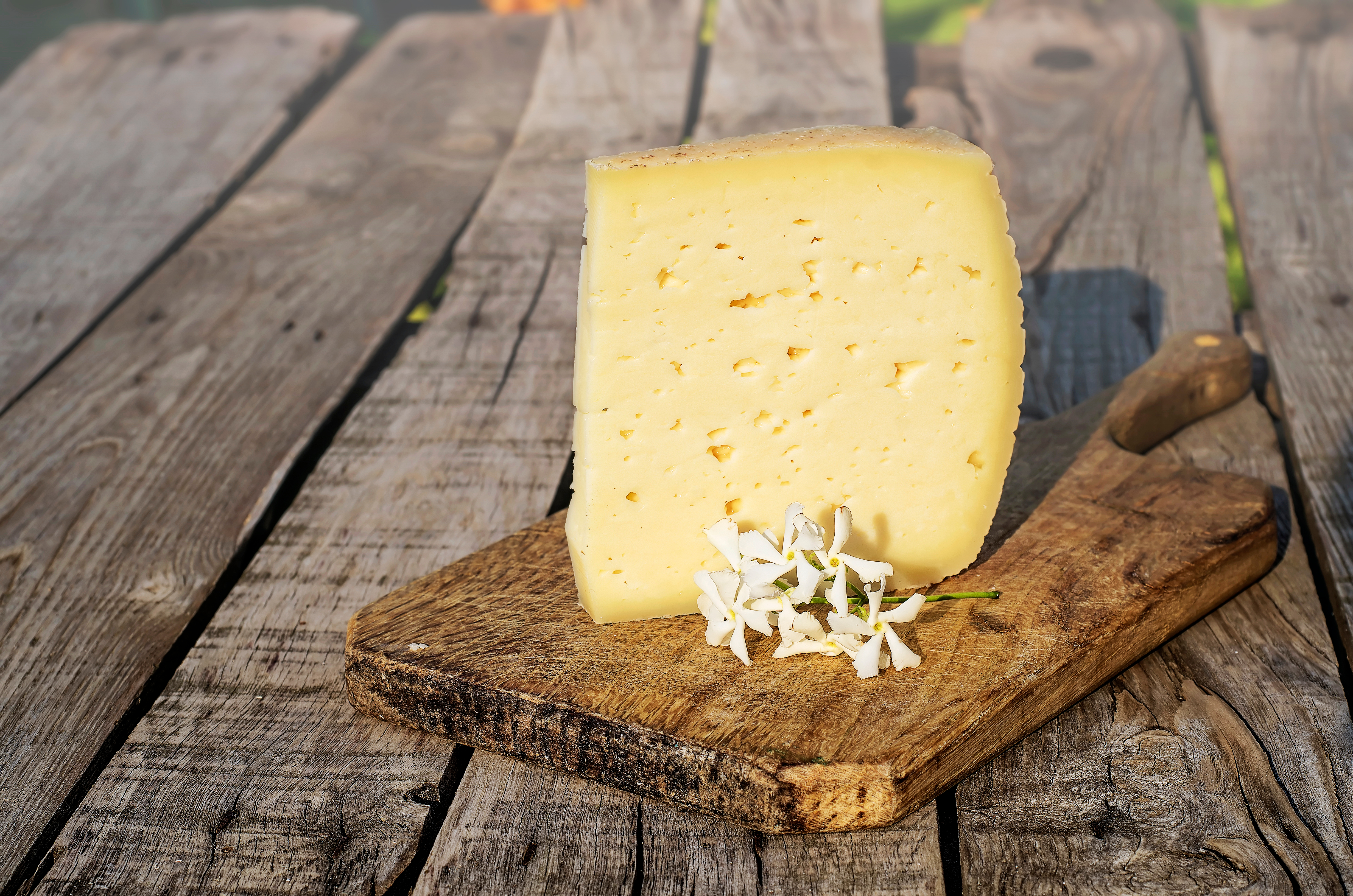
20. Asiago DOP
Asiago is beloved in Italy, with its varied maturities giving it versatility across the cheeseboard and kitchen. Made only on the Asiago plateau in the provinces of Vicenza and Trento, it is available as Pressato (fresh) or D’allevo (aged). Fresh Asiago is used in salads and fresh dishes, where it crumbles beautifully. While aged Asiago is taken from four months (Mezzano) to two years (Stravecchio). By the time it reaches this point, the hard, incredibly savoury cheese can be used almost like Parmigiano, or served in big chunks at the table alongside ripe fruit as an antipasti.

21. Fontina
This is not a shy cheese. Perfect for melting, it’s made in Italy’s famed Valle d’Aosta, where production dates back to the 12th Century. Its name, so legend has it, is taken from the village of Fontinaz or, more romantically, some say relates to the French word ‘fontis’, describing the way the cheese melts. Fontina has an earthy, terracotta coloured rind, beneath which is a semi-soft paste studded with eyes, and a rich, pungent flavour.
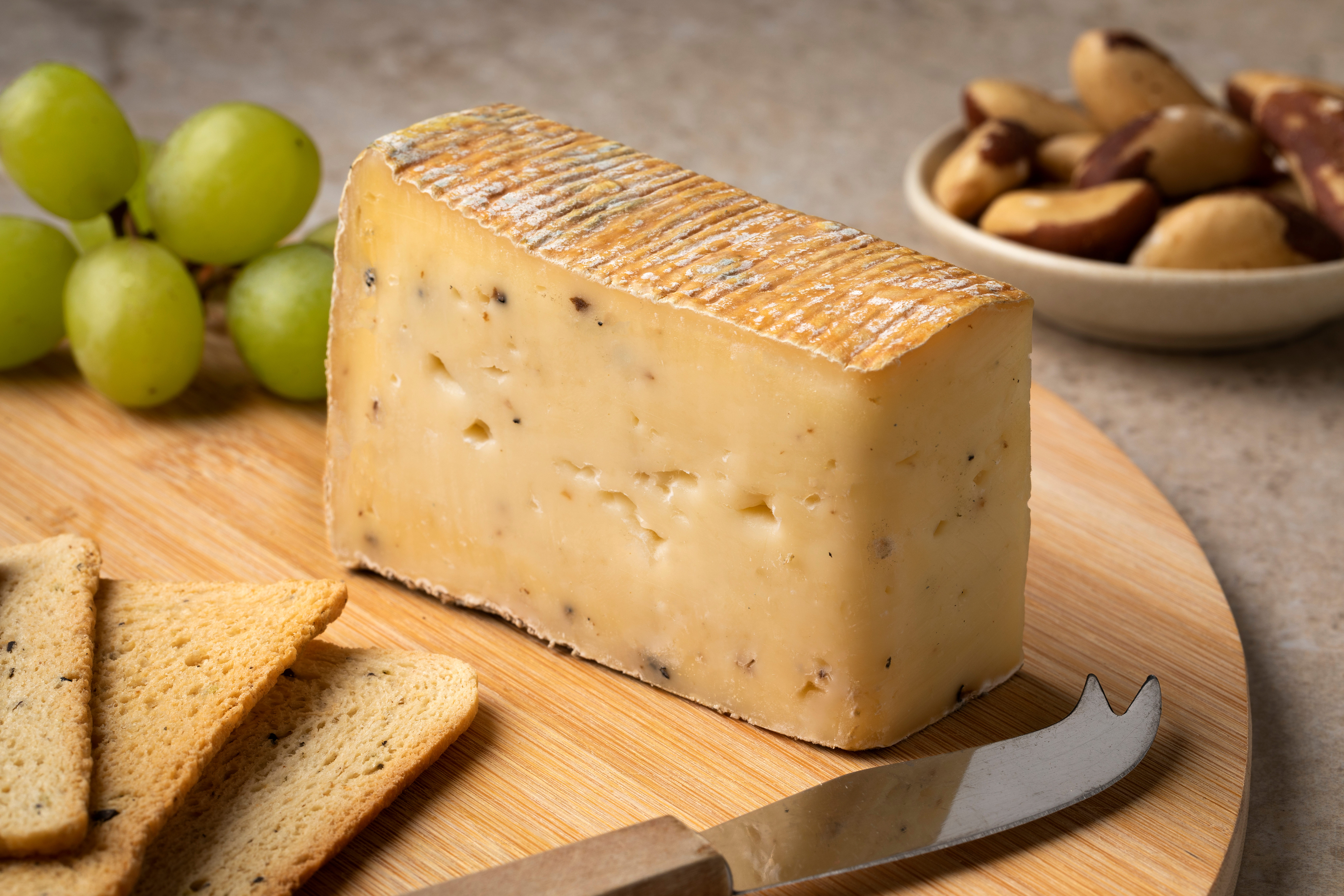
22. Taleggio
One of Italy’s most renowned cheeses, with a history stretching back to 9th Century Bergmo. It’s washed weekly during maturation to develop its pinky/hay coloured rind and intense, tangy, meaty taste, laced with salt and ripe fruit. Excellent for cooking, but also melt-in-the-mouth if devoured at room temperature.
23. Morbier
Morbier is distinguished by the thin layer of ash running through its middle. Named for the village of Morbier in France’s Jura mountains, the way this cheese is made harks back to heritage farming traditions, when farmers in the Franche-Comte region would collect milk twice a day, making cheese both in the morning and evening. To separate the batches, they’d sprinkle a layer of ash over the first batch, finishing it off with the second. Today, commercial producers have finessed the method, using just one batch of cheese in the make, but there are still artisans making it according to tradition, and they are worth seeking out. Morbier is one of the milder Alpine cheeses, being slightly elastic in texture, with notes of mushroom and cream, and a gentle acidity.
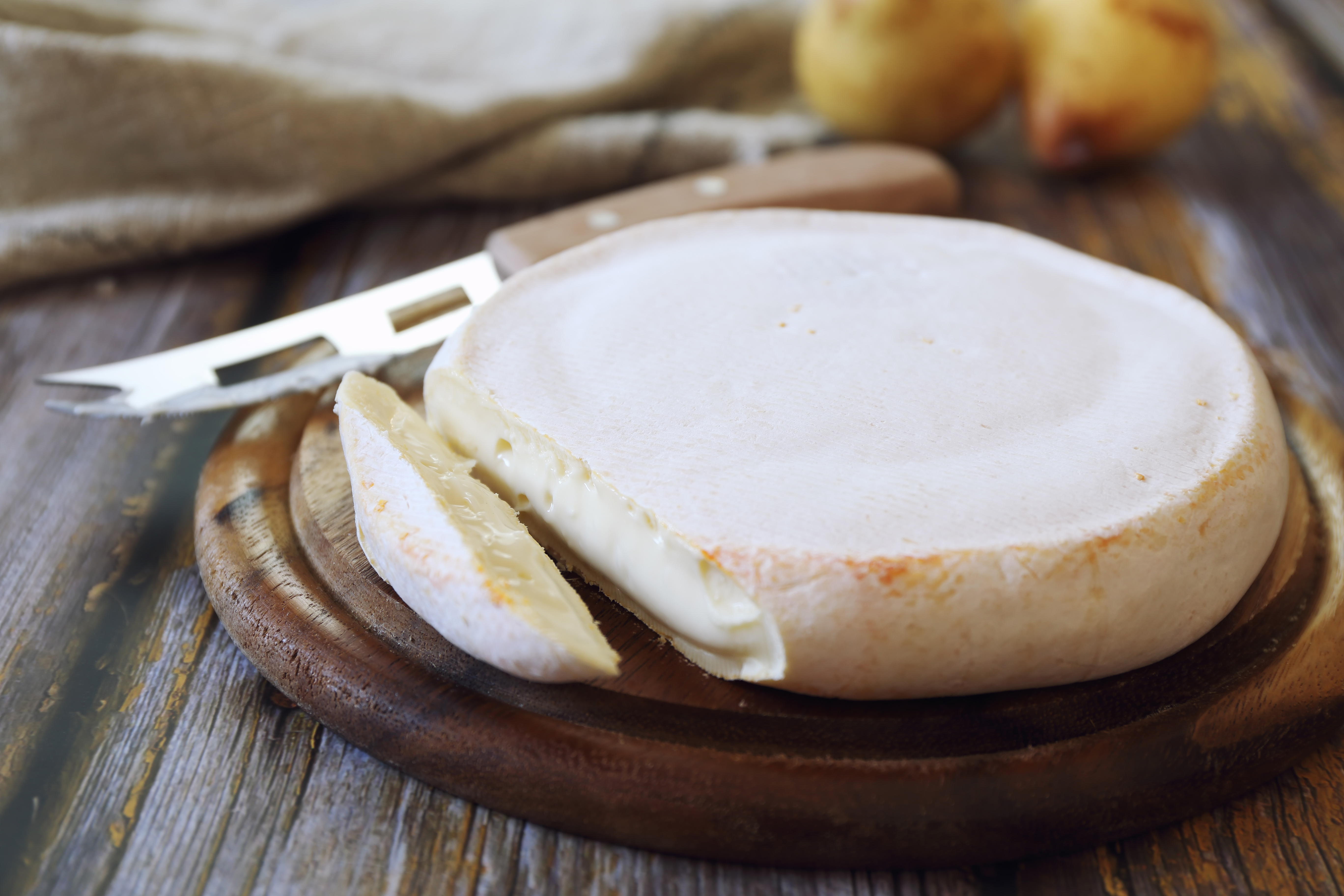
24. Reblochon de Savoie
Reblochon de Savoie has been made France since the 13th century. However, it was unheard of until the French Revolution as it had been made under a cloak of secrecy by farmers seeking to avoid the increasing taxes levied upon them by local monks and landowners. Today, the cheese doesn’t hide behind a bushel, and is part of France’s gastronomy, being a key ingredient in tartiflette. Within its pale orange rind, Reblochon is lusciously sweet, with lingering nutty, fruity notes.
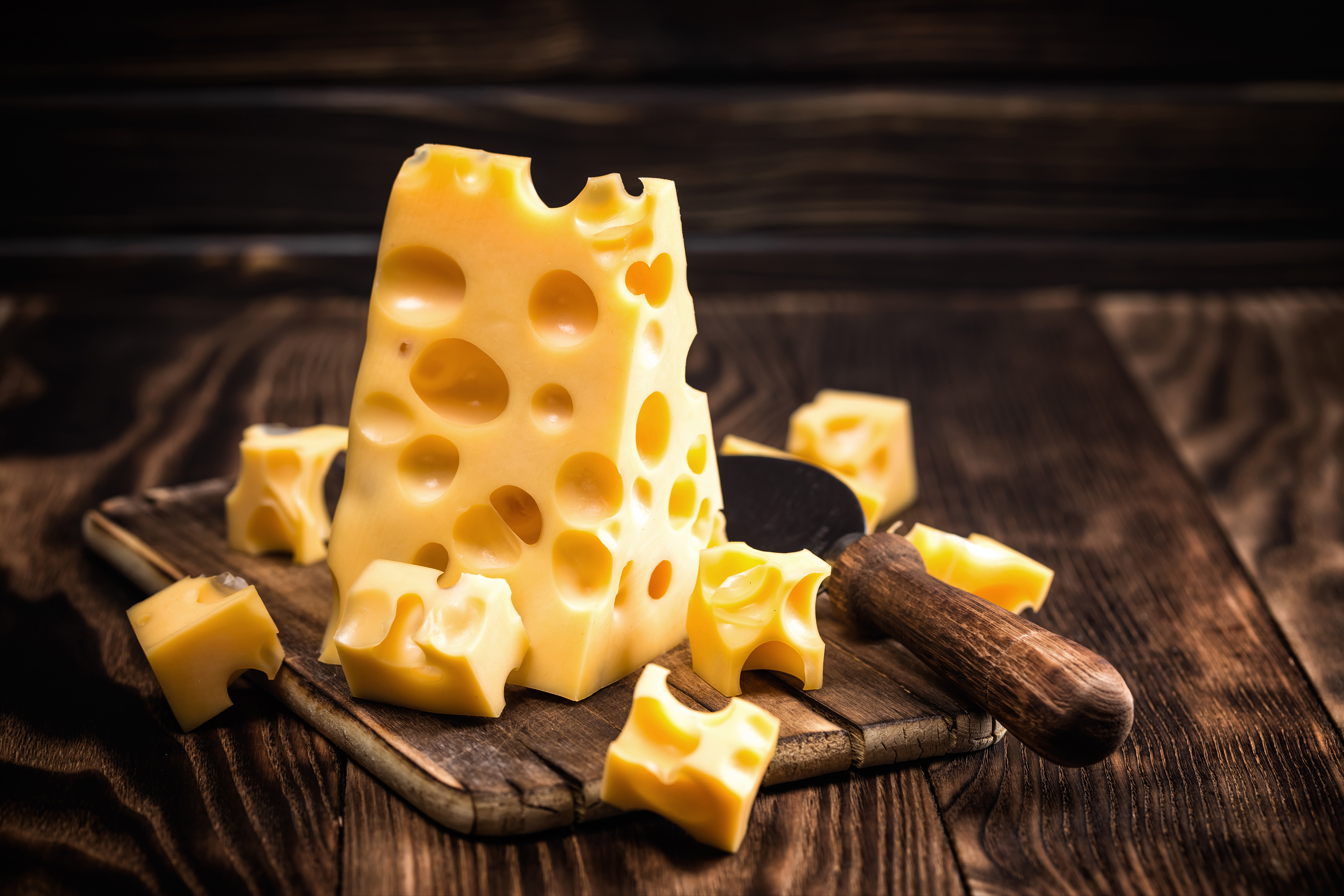
25. Emmental AOP
A cartoonish-looking cheese. The kind that might be used to distract a mouse, with its ripple of eyes (holes) all the way through, and bouncy, squishy nature. The production of Emmental in Switzerland dates back to the 13th Century in the region of Bern, with cheese produced here adhering to strict AOP guidelines – being made only with fresh raw, unpasteurised milk, from cows fed exclusively on grass and hay, with no additives.
Emmental must be matured for at least four months and has a nutty, slightly tangy, very gently acidic flavour. Most commonly it’s cut into cubes for serving, but it also finds its way into any dish requiring gooey, melted cheese, such as fondue.